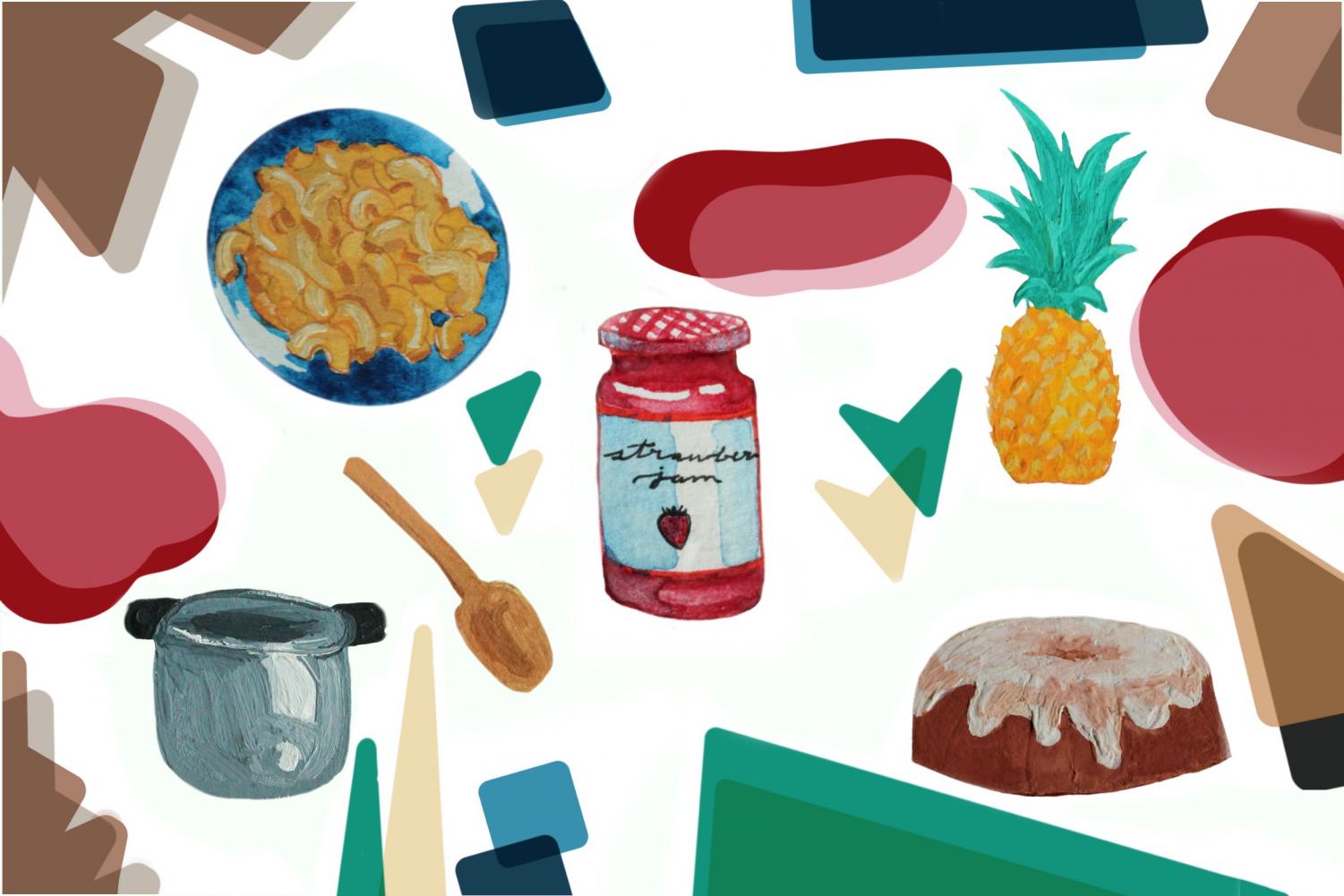Your donation will support the student journalists of North Cobb High School. Your contribution will allow us to purchase equipment and cover our annual website hosting costs.
Serving: food’s role in communication
December 3, 2020
Food. It gives people life, filling them both physically and mentally, and providing the energy to go on as it allows them to connect with those around them. The act of preparing and eating food with others exists as a timeless social tradition, with recipes, memories, religion, and cultures shared over broken bread. For different people, food serves as a way to create something unique and fulfilling, show love for others, or remember the past, and so we come together to eat.
From birthdays to informal brunches between friends to the Passover, meals remain a central element in celebrations, simple gatherings of friends, and holidays, as people eat together and frequently cook together, too.
Like other hobbies, cooking with others can strengthen relationships as knowledge, ingredients, and personal styles combine in recipes passed down through families and found via other resources. The process of cooking together offers people a chance to share their cultures in a comfortable, familiar setting while still introducing foreign elements.
“I met a lady from Lebanon who came to do some prep work in my kitchen, as a part-time job. Everyone that I worked with, mostly Americans, thought she was rude and unpleasant. I didn’t know a lot about Middle Eastern food but I did know a few recipes and I started to talk to her about her hummus recipe, her baba ganoush, her zatar spice, how she made pita. We built a relationship [on food] and it completely changed the way I think and feel about not only her but everyone in the Middle East. Now she’s one of my dearest friends. Food… was the bridge that brought us together,” said Chef Patrick Cantrell from Tiny Kitchen Provisions.

Beyond direct, face to face interactions seen as family and friends cook together, food culture and the art of cooking reaches the masses through the media. Food Network, speed cooking videos on social media, and food blogs represent facets of this industry. This became evident during quarantine, as sharing recipes on social media spread in popularity as people reached for ways to connect while physically distant. Whipped coffee recipes permeated TikTok, banana bread baking boomed, and loaves of sourdough bread reached ovens everywhere. Without actually eating around the same table with the creators of these dishes, one could experience good food as the creators did miles apart.
Besides providing entertainment and a way to connect with others, cooking shown in media and entertainment can serve as an inspiration for future cooks.
“I [watched] a lot of Food Network and Emeril Lagasse was absolutely the man when it came to cooking shows. He’s the New Orleans chef whose catchphrase was “kick it up a notch” and would shout “bam!” when he would throw more spices into a dish. He also cooked with a lot of garlic and beer and I really liked that,” Cantrell said.
Cooking and eating good food involves all five of one’s senses. Spices and other ingredients combine into a new and unique creation with color, texture, smell, taste, and even sound making a tiny culinary cosmos that exists only in that meal. Due to these strong sensory qualities of food, memories associated with foods remain strong even after years of not eating a specific dish. The combination of memories and the experience of enjoying good food can serve as a source of comfort in times of change or displacement, providing a moment to remember the events and people one associates the meal with. Eating a meal that evokes memories of a different time can provide a moment to remember the past, although making food one’s only comfort in stressful or difficult times can quickly become an unhealthy habit.
People also frequently utilize this comforting effect of food to express care for those around them, such as when a parent makes a specific dish when their child does not feel well, or when someone brings a new mother a meal. Baking a loaf of bread or cooking a meal serves as a way to give not only of one’s substance but one’s time, skills, love and support without saying a word.
Whether someone cooks for themselves or others, cooking presents an opportunity to express oneself creatively. Although works of art created in the kitchen do not find their way to museums or concert halls, the act of choosing ingredients and using them to create something unique and useful remains a fulfilling and exciting hobby for amateur and professional chefs.
“For me, [cooking] has always been a way for me to meet a desire to create. I have always needed some way to express myself and in this case, it turned into cooking. I didn’t recognize it then, but I think the interest has always been inside me. Once I learned to create a recipe, to make a unique dish that was my own and especially when people responded to it… it became something that I wanted to put my heart into. As recipes and meals possess the power to carry memories and showcase an individual’s creativity and knowledge, the younger generations frequently find that they learn their family’s culture most through the food they share with older generations,” Cantrell said.
Due to time and circumstance, family members and friends become spread out or separated. Shared recipes serve as a way to remember those from other places and times.

In addition to providing this link to the past, sharing foods with family members helps to create bonds as they enjoy a meal together. Even if people do not share similar hobbies or occupations, everyone needs to eat.
“Since it’s only my mom’s side that’s Filipino it’s always been harder to connect with the culture. Luckily, you don’t need to know the language to eat the food. I grew up eating traditional Filipino food everyday and learning more about why we eat what we eat and the importance of eating together as a family. That’s big for us because it shows we’re connected through our food and our culture, plus Filipino food smacks, “ sophomore Kiana Hawley said.
Instances such as this exemplify why food holds such a significant place in society. Due to biological necessity, it remains a common variable between people of all ages and backgrounds, regardless of age. The infinite variations of flavor and culinary methods form threads that tie together families, friends, and strangers as they gather around their tables to eat.

